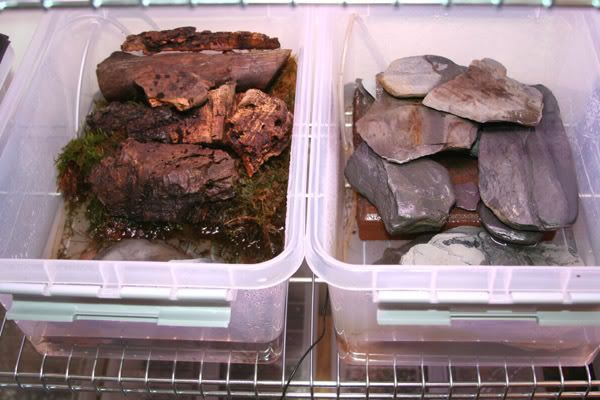- Joined
- Oct 14, 2004
- Messages
- 3,259
- Reaction score
- 59
- Points
- 48
- Location
- Bristol
- Country
- United Kingdom
Many keepers go to lengths to make their vivaria as complex and decorative as they can. I’ve never been a fan of substrates, ornaments and too much technology, I like to keep thing as simple as possible because it saves me time and gives more control over the animal’s environment. I’m a big fan of plastic containers because they’re light, cheap and easy to modify. I’m always amazed at the number of posts where an animals well being is compromised because the keeper can’t afford to buy a new glass tank…
Much of it obviously comes down to personal preference and the positioning of your newt/sal in the house – who want’s to look at a plastic tub in the living room? But it’s always good to remember how easy these great creatures can be housed.
A shrine to newts in tubs.

An aquatic tub with plastic plants and floating cork

A simple tub for rearing larvae - water and a handful of pond weed

Two different tubs containing Desmognathus. One with rocks, the other with moss and logs.

Much of it obviously comes down to personal preference and the positioning of your newt/sal in the house – who want’s to look at a plastic tub in the living room? But it’s always good to remember how easy these great creatures can be housed.
A shrine to newts in tubs.

An aquatic tub with plastic plants and floating cork

A simple tub for rearing larvae - water and a handful of pond weed

Two different tubs containing Desmognathus. One with rocks, the other with moss and logs.







